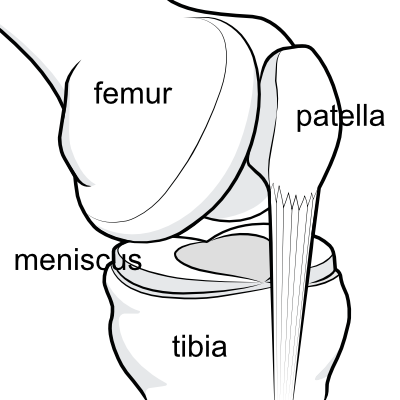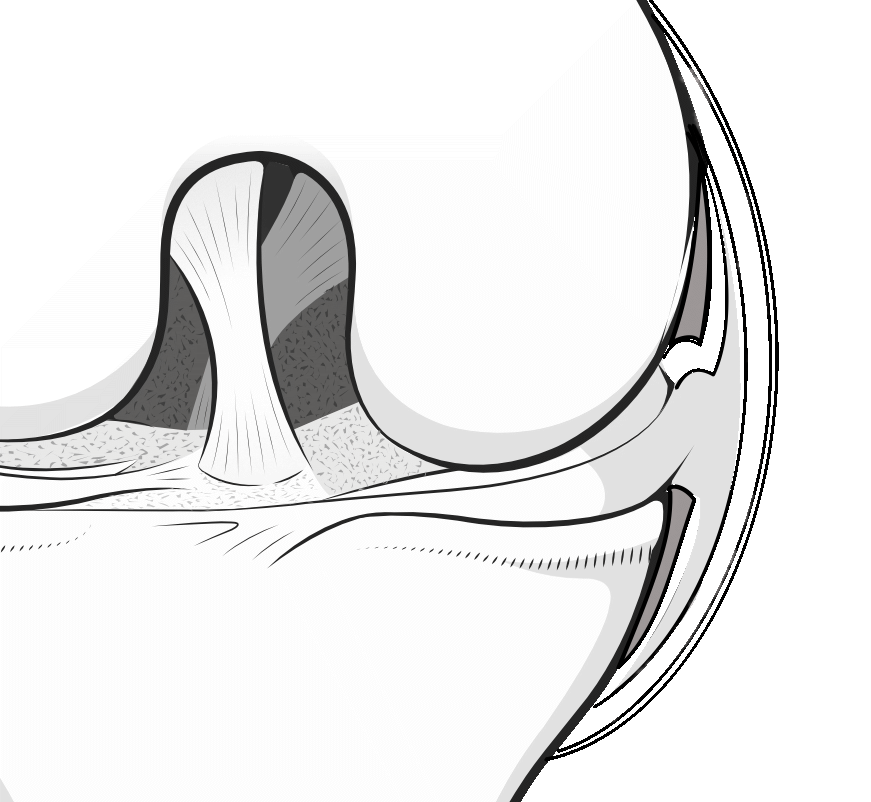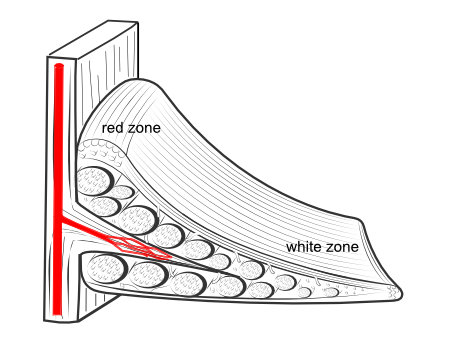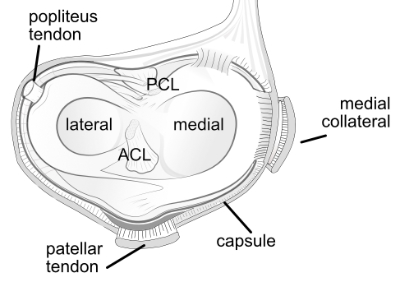The meniscus is the shock absorber of the knee. It is a crescentic wedge of fibre-filled cartilage, seated in the gap between the two long bones of the knee (tibia and femur).
 Page updated January 2024 by Dr Sheila Strover (Clinical Editor)
Page updated January 2024 by Dr Sheila Strover (Clinical Editor)

Each knee has two menisci - a medial meniscus on the inner aspect and a lateral meniscus on the outer aspect. Each crescent has an outer rim and an inner rim.

The outer rim is wider and better supplied with fibres and blood vessels. The inner rim is sharper with poorer blood supply. Areas of the outer rim, especially on the medial meniscus, are intimately related to the capsule which surrounds the knee cavity and makes it water-tight.
What does the knee meniscus do?
The menisci are the shock absorbers of the knee. They are packed with fibres running in different directions and which are supported by a cartilagenous matrix. The fibres and matrix absorb the vertical forces going through the joint, channelling stresses towards the outer edge where the fibre bundles are more tightly packed and resilient.

The blood supply of the meniscus comes from the outer capsule. This means that the outer rim of each meniscus is well supplied with blood, and tears in this area have a good opportunity to heal. On the other hand, the blood supply progressively reduces as it approaches the inner rim, so tears of the inner rim do not heal well.
How are the medial and lateral menisci different?
 This illustration looks down onto the top of the two menisci - and you can see that the medial and lateral menisci are shaped differently.
This illustration looks down onto the top of the two menisci - and you can see that the medial and lateral menisci are shaped differently.The lateral meniscus is more 'O'-shaped and is quite mobile - the capsular attachments at the outer rim are not strong, and there is a defect in the capsular attachment where the popliteus tendon passes. So the lateral meniscus can glide when the knee is twisted, and tears are less common.
The medial meniscus, in comparison, is 'C'-shaped with strong capsular attachments and is relatively immobile, unable to glide much when the knee is twisted, and thus suffering more tears.
What are the horns, rim and roots of the meniscus?

The pointed ends of each meniscus are referred to as the 'horns' of the meniscus. The anterior horns are at the front and the posterior horns are at the back. It is at the horns that the menisci are directly tethered to the tibia bone, via structures called the meniscal roots.
The meniscal roots burrow down into the tibia bone and anchor the meniscus strongly at the horns. If a root is torn out of the bone during an injury the whole meniscus will become incompetent and no longer function properly. Avulsion may follow.
Quick links
Peer-reviewed papers
-
Quote:
"Injuries to the menisci are recognized as a cause of significant musculoskeletal morbidity.....The unique and complex structure of menisci makes treatment and repair challenging for the patient, surgeon, and physical therapist."
Citation: Fox AJ, Bedi A, Rodeo SA. The basic science of human knee menisci: structure, composition, and function. Sports Health. 2012 Jul;4(4):340-51. doi: 10.1177/1941738111429419. PMID: 23016106; PMCID: PMC3435920.
Meniscus anatomy -
Meniscus tethers -
Other relevant links -
- Torn meniscus
- Meniscal avulsion
- Meniscal extrusion
- Meniscal cyst
- Meniscus repair
- Meniscus repair augmentation
- Meniscus replacement
- Meniscectomy
Specialist opinion -
 2017 - What is meniscus preservation and why does it matter? - by Prof Raju Vaishya (Knee Surgeon)
2017 - What is meniscus preservation and why does it matter? - by Prof Raju Vaishya (Knee Surgeon)